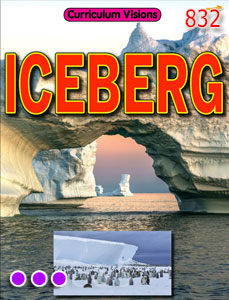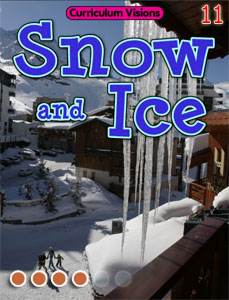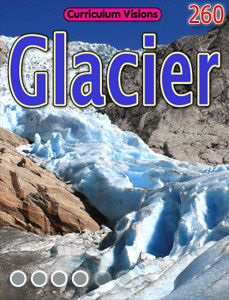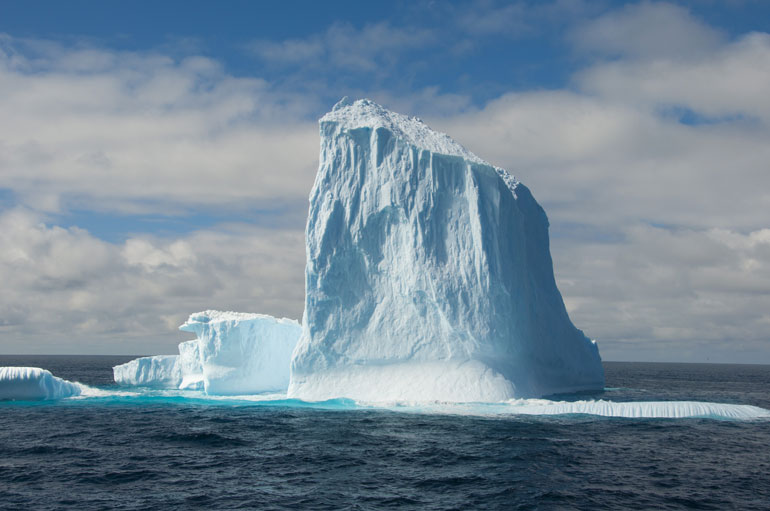The word iceberg comes from the German, meaning 'ice mountain (berg)'. An iceberg is a large piece of freshwater ice that has broken off a glacier or an ice shelf and is floating freely in open water.
Not all icebergs remain free floating. In winter, when the surface of the entire ocean freezes in the Arctic and Antarctic, icebergs may become frozen into pack ice (sea ice). As it drifts into shallower waters, it may come into contact with the seabed, and then ocean currents may carry it for some distance across the seabed, where it gouges great channels.
Icebergs are broken pieces of glaciers and ice sheets. Glaciers and ice sheets begin on land and form when the amount of snow that builds up in winter is greater than can be melted away in summer. Because summers are short, and the sun is always at a low angle in the Arctic and Antarctic, these are the places where most glaciers and ice sheets are found. However, where there are very high mountains close to the coast, as in Alaska and Patagonia, Chile, then glaciers may also reach the sea. (for more read the book)







